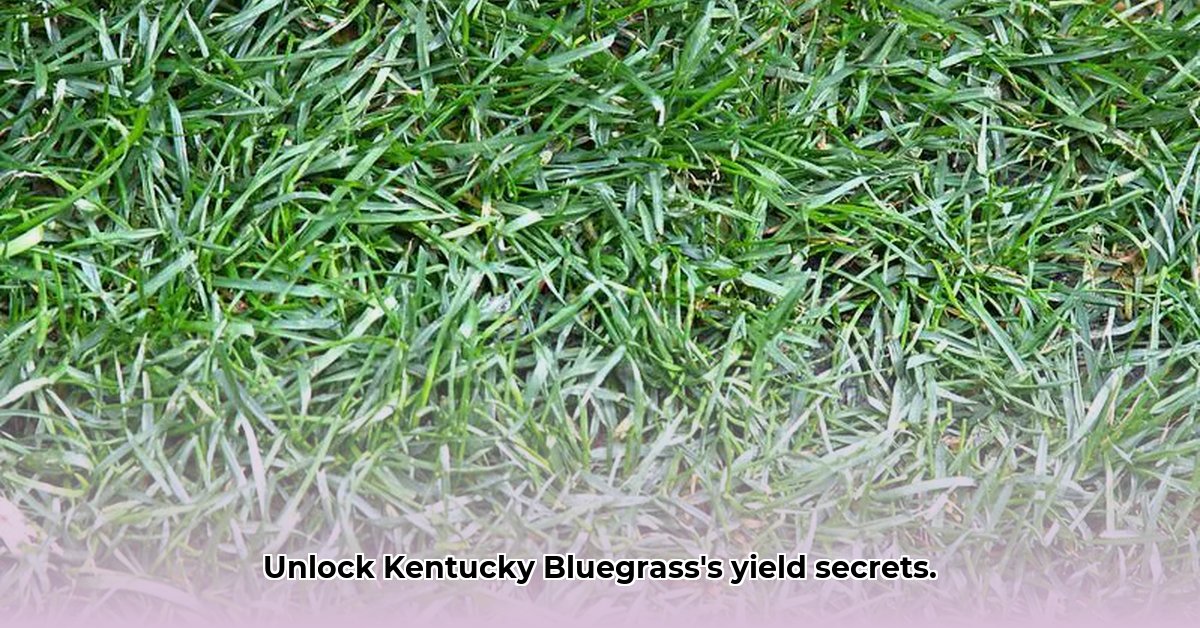
Growing lush, healthy grass isn't just about aesthetics; it's crucial for sustainable farming, boosting yields and protecting our environment. This guide shows you how smart choices in grass seed selection and management can lead to a healthier, more productive farm. For expert advice and supplies, check out your local Tractor Supply.
Choosing the Right Grass for Your Farm: Beyond Kentucky Bluegrass
Kentucky bluegrass is a popular choice, offering a dense lawn. However, its suitability depends on your farm's climate and soil. Is your area prone to drought? Do you have heavy clay or sandy loam? Some Kentucky bluegrass varieties are drought-tolerant, while others thrive in consistently moist conditions. This makes careful selection critical.
Consider your local climate. In hot, dry regions, tall fescue or drought-resistant blends might be better. In consistently wet areas, certain ryegrasses may be optimal. Consulting your local Tractor Supply expert is crucial for selecting a seed perfectly suited to your farm's conditions. They can help you navigate the nuances of various options. Aren't informed decisions the cornerstone of successful sustainable practices?
Soil Health: The Foundation of Sustainable Agriculture
Healthy soil is paramount. Before planting, conduct a soil test. This inexpensive test reveals pH, nutrient levels, and overall health, providing a personalized plan for soil improvement. A soil test empowers you to make targeted amendments, maximizing your return on investment.
If your soil lacks nutrients, add compost, aged manure, or other organic amendments. These improve soil structure and water retention. For example, compost can enhance drainage in clay soils and moisture retention in sandy soils. No-till farming minimizes soil disturbance, maintaining the soil ecosystem's delicate balance, enhancing long-term soil health.
Sustainable Planting and Grass Management: A Step-by-Step Guide
Here's a practical approach to planting and managing your grass sustainably:
Seedbed Preparation: Create a smooth, weed-free seedbed for even germination and strong seedling establishment. This fundamental step sets the stage for healthy growth.
Seeding: Follow the recommended seeding rate on your grass seed package. Consult your Tractor Supply expert if unsure—accurate seeding is essential for efficient resource use.
Watering Wisely: Water deeply and less frequently to encourage deep root growth. Shallow, frequent watering leads to surface roots vulnerable to drought stress. This water conservation strategy contributes to both environmental sustainability and cost efficiency.
Natural Fertilization: Use organic fertilizers for slow-release nutrients, avoiding harmful chemical fertilizers and promoting a healthier soil ecosystem. A sustainable approach minimizes environmental impact while promoting healthy growth.
Integrated Pest Management (IPM): Prioritize natural pest control and use chemical pesticides only as a last resort. IPM protects beneficial organisms and minimizes environmental impact.
Monitoring Your Success: A Continuous Improvement Process
Sustainable farming is an ongoing process. Regularly monitor your grass's growth, tracking yield, water usage, and soil health. Regular soil testing helps evaluate your progress and adapt strategies. Detailed records are invaluable for analyzing your results and making informed adjustments. Remember, sustainable farming is a journey of continuous learning and improvement. What key metrics will you track to showcase your progress?
Kentucky Bluegrass vs. Alternatives: A Comparison
| Feature | Kentucky Bluegrass | Alternatives (e.g., Fescue, Ryegrass) |
|---|---|---|
| Drought Tolerance | Moderate (varies by cultivar) | Often Higher (varies by specific variety) |
| Shade Tolerance | Moderate | Varies significantly |
| Wear Resistance | High | Varies significantly |
| Fertilizer Needs | Moderate to High | Can be lower (depends on soil and variety) |
| Establishment | Can be slower | Often faster |
Your local Tractor Supply Company is a valuable resource. They offer a wide selection of seeds, fertilizers, and supplies, and their staff provides tailored advice. By combining smart seed selection with sustainable management practices, you can build a healthier, more productive, and environmentally responsible farm. What steps will you prioritize to optimize your farm's sustainability?